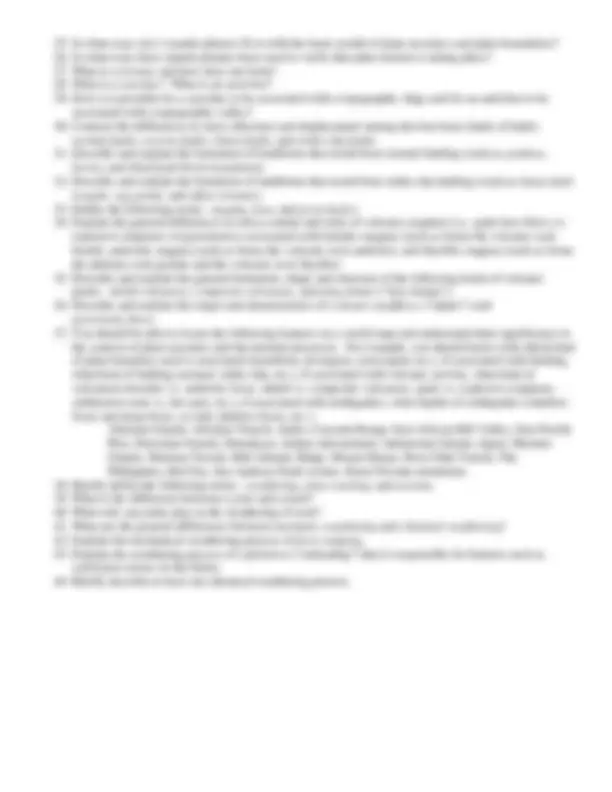
City College of San Francisco Spring 2009
GEOG 1—Physical Geography
Darrel Hess
Third Midterm Examination Study Questions
The questions below will help you focus on the most important concepts presented in class as you prepare for
the third midterm exam. These questions don’t necessarily represent everything you may be tested on (nor will
you necessarily be tested on all of the material noted below), but these questions are a good starting point as you
study for the exam.
1. Contrast the concepts of “internal” and “external” processes.
2. In the context of geomorphology, what is meant by the term relief?
3. How does the doctrine of uniformitarianism help us understand the history of Earth?
4. How is a mineral different from a rock?
5. Describe the general differences among igneous, sedimentary, and metamorphic rocks.
6. What is the difference between a plutonic (intrusive) igneous rock and a volcanic (extrusive) igneous
rock?
7. Why do plutonic rocks have larger mineral crystals (mineral crystals large enough to see with the
unaided eye) than most volcanic rocks?
8. What are the main differences between granite and basalt?
9. Why do most sedimentary rocks form in flat, horizontal layers?
10. Why are metamorphic rocks often found in contact with plutonic rocks such as granite? (Hint:
Consider the source of the heat and/or pressure that can cause metamorphism.)
11. Over long periods of time, how can the minerals in one rock end up in a different rock (or a different
kind of rock)? (In other words, explain the rock cycle.)
12. In the context of plate tectonics, describe the differences between the lithosphere (the “plates”) and the
asthenosphere.
13. Why was Alfred Wegener’s theory of “continental drift” rejected for so long?
14. What lines of evidence confirm that seafloor spreading has been taking place and that the positions and
configuration of continents and ocean basins changes over geologic time? You should be able to
describe and explain at least one line of evidence found on the ocean floors that verifies seafloor
spreading, and at least one line of evidence found on the continents that indicates that the positions of
continents were different in the past.
15. What general process within Earth is responsible for lithospheric plate movement?
16. What is the general relationship of global earthquake activity to plate boundaries?
17. Describe the fundamental differences among divergent, convergent and transform plate boundaries.
18. Describe and explain the tectonic activity, volcanic activity and general topographic features of the two
kinds of divergent plate boundary: midocean ridges and continental rift valleys. Mention at least one
present-day example of both of these kinds of divergent boundary.
19. Describe and explain the tectonic activity, volcanic activity and general topographic features of the three
kinds of convergent plate boundary: oceanic-to-continental plate subduction, oceanic-to-oceanic plate
subduction, and continental plate collision. Mention at least one present-day example of each of these
kinds of convergent boundary.
20. Why can oceanic lithosphere be subducted while continental lithosphere cannot?
21. How does the San Andreas Fault system fit in with the model of plate tectonics?
22. Why are deep-focus earthquakes (those originating many hundreds of kilometers below the surface)
associated with subduction zones, but not with divergent boundaries and transform boundaries?
23. Why is there such a concentration of volcanoes and earthquakes around the margin of the Pacific Ocean
(a region referred to as the Pacific Ring of Fire)?
24. What is a mantle plume (“hot spot”)? Name at least one present-day example of a mantle plume.










